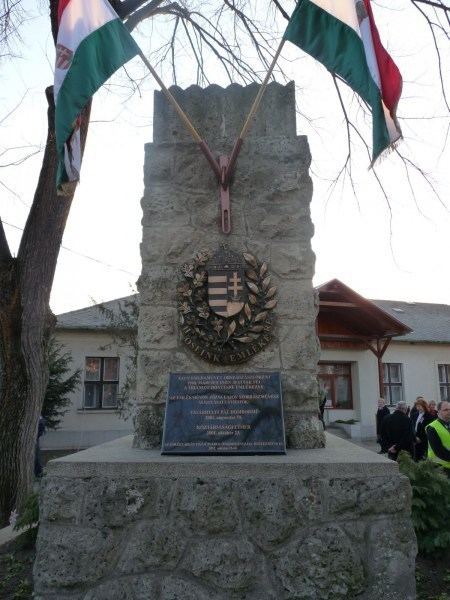Local time Saturday 9:26 PM | ||
 | ||
Weather 12°C, Wind SE at 8 km/h, 52% Humidity | ||
Tiszaszederkény is a little village on the North-Eastern territory of Hungary, in the neighbourhood of Tiszaújváros. This territory was conquered by the prehistoric man more than 6,000 years ago. The village was mentioned first in an official charter in the 13th century. During the Turkish invasion, many people escaped from the village and it became depopulated. Through the centuries, the place became well-knowned and more and more people arrived. The place was affected by the regulation of the river Tisza in the early 19th century. The population decreased during the first and second World War. In the second half of the 20th century, Tiszaszederkény got the "Town" title and became the 66th town of Hungary. Today Tiszaszederkény is part of the township of Tiszaújváros.
Contents
Map of Tisza%C3%BAjv%C3%A1ros, Tiszaszederk%C3%A9ny, 3585 Hungary
History
The history of Tiszaszederkény goes back to the ancient times. The first humans were settled down 6,000 years ago, during the Neolithic period. The closeness of the river Tisza and the flat, fertile land provided a very good place to settle down. After the establishment of the county system, this dwelling-place and its neighbourhood became part of the Borsod county system. It was a good place to cross the river Tisza, so later the village functioned as a crossing-place.
1268 was the first time when Szederkény was mentioned in an official charter as "VILLA SCEDERKYN", and in 1319, it was referred to as "Villa Zederken". Under the reign of the Anjous, several estates were expropriated and gifted away. Because of this reason, the settlement got into the hands of Dózsa Debreceni and later into the hands of the Czudar family. However, the male line of the family died out in 1470, so the domain was acquired by the Rozgonyi family and later by Péter Perényi.
During the Turkish invasion, many people escaped from the village. Because of this decrease, the village was recorded as an extinct place in 1615 and 1616. Later, as a solution for populating the village, Zsuzsanna Lorántffy settled 32 Hajdu families here in 1651. Between 1670-1672, protestant pursuits and fightings were taking place to forcefully catholicize people, however, the villagers remained Protestant.
After 1767, based on the regularisation of copy-holders, ordered by Maria Theresa, the central government arrangements regulated the compilation of the Urbarium in a unitary manner. Copy-holder plate was attached to the urbarium, which included the names of landlords and villagers,their land, quantity and composition of their annual surrender. Urbarium of Szederkény was prepared and authenticated by József Ragályi and Joan Baroy de Fáy, on 14 June 1771. In 1898, it was decreed that all Hungarian village's name had to be regularised. The village was located close to river Tisza and its name was modified to Tiszaszederkény on 1 January 1905.
The first and second World War demanded lot of casualties from Tiszaszederkény too. Thatched cottages disappeared and the old buildings were renewed. 9 September 1955, the construction of a new town commenced at the boundary of Tiszaszederkény, providing home for the people who was working in the surrounding industrial plants. Tiszaújváros and Tiszaszederkény merged and now, Tiszaszederkény is the quarter of Tiszaújváros.
Tourism
The village existed in the ancient times, however, there are not much historical buildings or museums. The "Villa Scederkyn" provincial house and a Reformed Church are waiting the visitors on every day. The first version of the Church was built in 1600 by wood, but later it was conscrated in 1799. The "Legyen Szerederkény vendége" festival is a festival being held in every year. Tiszaszederkény is full of families who offer rooms for the visitors where they can spend a few days for a very good price.
